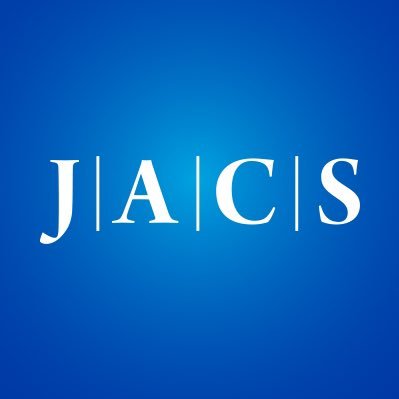
Francesco Ricci Lab
@RicciLab
Followers
2K
Following
2K
Media
121
Statuses
627
Professor @ Univ. of Rome Tor Vergata. #Nanotechnology, #SyntheticBiology, #Nanomachines and #Nanodevices.
Roma, Lazio
Joined May 2017
Immune-Induced Antibody–DNA Hybrid Condensates | Journal of the American Chemical Society
pubs.acs.org
We report here the combined use of Watson–Crick and antibody–antigen interactions to induce phase separation of antibody–DNA hybrid condensates. To achieve this, we have used an antigen-conjugated...
0
2
8
All results were nicely described by theory and simulations of a phase-field model by our collaborators Lorenzo Rovigatti and Marco Cappa @SapienzaRoma. Finally thanks to co-corresp author @erica_delgrosso for her invaluable support and @AIRC_it and @ERC_Research for funding. 6/n
0
0
0
We also show that by simply replacing the antigen on the DNA nanostar we can induce the phase separation of different condensates in a orthogonal way without any crosstalk...here is the microscopy image of three condensates formed upon addition of three different antibodies! 5/n
1
0
0
We demonstrate this with a very simple system (anti-biotin antibodies and biotin as antigen). We show that the antibodies and DNA are perfectly colocalized and the structural stability of the hybrid condensates is provided by both nucleic acids and antibodies. 4/n
1
0
0
We redesigned a 4-arm DNA nanostar to have three arms with DNA-based sticky ends and one arm end-conjugated with an antigen. Only through bivalent antibody–antigen binding, such nanostars phase-separate to form micron-scale hybrid condensates. 3/n
1
0
0
In cells, organelles and condensates often form through intricate networks of protein−protein or protein−nucleic acid interactions. We aimed to recreate this complexity in this work by using both DNA-DNA and antibody-antigen interactions to make synthetic condensates. 2/n
1
0
0
New paper from our group just out in @J_A_C_S! We show the combined use of DNA-DNA and antibody–antigen interactions to induce phase separation of antibody–DNA hybrid condensates. https://t.co/j8wpPiDH2J Congrats to Sara (@sara29_ss) for her first first-author paper!👇🧵 1/n
pubs.acs.org
We report here the combined use of Watson–Crick and antibody–antigen interactions to induce phase separation of antibody–DNA hybrid condensates. To achieve this, we have used an antigen-conjugated...
2
3
46
The next Functional DNA Nanotechnology workshop #FDN2025 (Rome 15-17 October) is just around the corner! Due to last minute cancellations, we still have a couple of places available if anyone is interested... https://t.co/0wMP4Zx8ZX
1
3
13
Nice to see this collaborative work out in @angew_chem. We joined forces with @Ale_Sorrenti1 and @PuigmartiLuis to achieve non-equilibrium steady states using DNA-based systems and controlled RNA fuel supply. Congrats to @erica_delgrosso and @JamesDNicholas🥳
📢Check out our new paper! ✨ We demonstrate non-equilibrium steady states of a DNA-based system that dynamically adapt in real-time to subtle on-the-fly variations of a RNA fuel supply, and correspond to a true non-equilibrium composition of the system. https://t.co/8VF5C5gJdx
0
2
24
Excited to see our latest work finally out in @NatureNano 😍😍. Great collaboration and many thanks to all the authors @leonard_prins @RicciLab @benjamino_acid and @Epenocchio 🥳🥳
New paper online: An information ratchet improves selectivity in molecular recognition under non-equilibrium conditions. "...mechanism increases selectivity for the correct DNA duplex from 2:1 at equilibrium to 6:1 under energy-dissipating conditions." https://t.co/EOCUAmFHRu
0
3
28
Great to see this is now out in @NatureNano! Thanks to @leonard_prins for this (yet another) collaborative project...kudos to @erica_delgrosso and Ben Roberts for combining experiment and theory in such a nice way. Thanks also to @EPenocchio for help with the theoretical part!
New paper online: An information ratchet improves selectivity in molecular recognition under non-equilibrium conditions. "...mechanism increases selectivity for the correct DNA duplex from 2:1 at equilibrium to 6:1 under energy-dissipating conditions." https://t.co/EOCUAmFHRu
0
5
36
Finally, big congrats to our PhD student Francesca Miceli for her first first-author paper and to all the coauthors (@Simona_Ranallo, @BracagliaSara, @SorrentinoDa, @alessan_porch).
0
1
4
The name of the assay is an homage to one of the best examples of CRISPR-based sensors (SHERLOCK, @Sherlock_Bio) developed by @zhangf, Collins + colleagues. While SHERLOCK detects DNA/RNA strands, MAIGRET enables the detection of proteins, antibodies and other molecules. 5/n
1
1
2
We have used MAIGRET for the detection of six different antibodies with high sensitivity (detection limit in the picomolar range) and specificity (no signal from non-target antibodies). MAIGRET can also be adapted for a competitive approach to detect specific antigens. 4/n
1
0
0
In the second step, this transcribed guide RNA activates the DNA collateral activity of the Cas12 enzyme, leading to the cleavage of a fluorophore/quencher labelled reporter and thus to an increase in the fluorescence signal. 3/n
1
0
0
MAIGRET (Molecular Assay based on antibody-Induced Guide-RNA Enzymatic Transcription) works in two steps. In the first step, a reactive synthetic DNA template triggers the cell-free in vitro transcription of a guide RNA strand upon recognition of a specific target antibody. 2/n
1
0
0
The paper describing our MAIGRET (Molecular Assay based on antibody-Induced Guide-RNA Enzymatic Transcription) system is finally out in @NAR_Open! https://t.co/JzlIcq9SZP.
@ERC_Research, @AIRC_it 1/n
academic.oup.com
Abstract. Here we report on the development of a CRISPR-based assay for the sensitive and specific detection of antibodies and antigens directly in complex
1
5
27
*ALERT* If you are a bioengineer (or related), if you use synthetic biology for health-related applications, and you wish to start your own lab in a neat place (Naples), in a fantastic research institute, stay tuned, a call will be coming out! DM me if you want to have more info!
0
17
62







